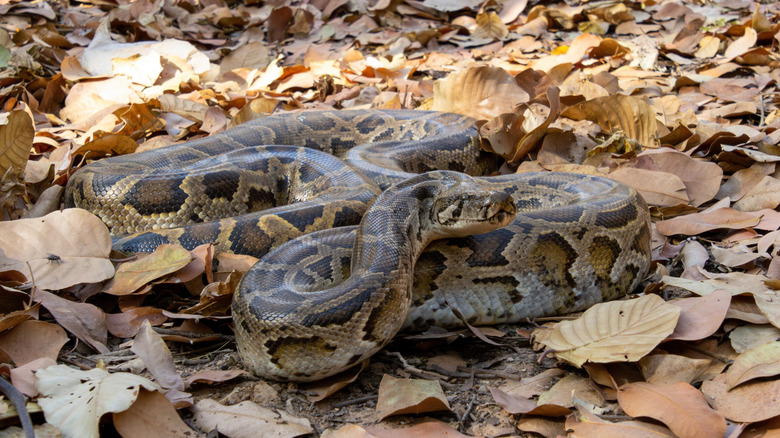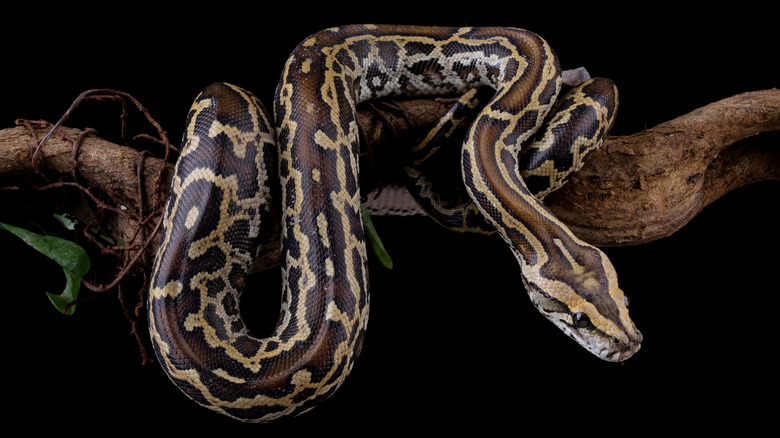Florida's Python Problem Is Even Worse Than Scientists Thought Due To A Disturbing Discovery
Initially introduced via the pet trade in the 1980s, the Southeast Asian Burmese python is now an invasive species in the Florida Everglades. Far from being the cute snakes that slither into their owners' hearts, the large Burmese python, measuring between 10 and 16 feet long, poses a threat to smaller native wildlife in the area. However, a study has shown that this already adaptive predator may be becoming an even bigger problem.
Published in Ecology and Evolution, the 2018 study revealed that 13 out of roughly 400 snakes observed were a unique hybrid of the Burmese and Indian python. With the Burmese thriving in wetlands and the Indian in high plains, this has increased the environments where the Burmese can flourish, making it more difficult to track. U.S. Geological Survey research geneticist Margaret Hunter commented on the challenge on the USGS website, stating, "[interbreeding]can lead to hybrid vigor, that is, the best traits of two species are passed onto their offspring," adding, "In an invasive population like the Burmese pythons in South Florida, this could result in a broader or more rapid distribution."
The Burmese python's already elusive nature has proven difficult for scientists to track; it can't be lured out of hiding like a pet snake. Its interbreeding with the Indian python has only made this task more difficult and the python a potentially greater threat to Florida's endemic species. Still, there are many ways that Floridians continue to attempt to curb the invasive species.
The threat of Burmese pythons in Florida and how the state is dealing with it
The thriving Burmese pythons in the Florida Everglades are primarily due to the complementary environment for the semi-aquatic snake and the lack of natural predators. The python has directly caused a significant decline in marsh rabbit populations and threatens the endangered wood stork. Additionally, threatened species like the indigo snake have experienced a decrease in available prey, while other snakes are susceptible to a non-native lung parasite spread by the Burmese python.
To address the issue, the U.S. Fish and Wildlife Service launched the Florida Python Challenge in 2021, which included innovative methods to help curb the population. Notably, the training of search dogs and the collection of environmental DNA (eDNA) to determine locations with snakes have proved to be effective tools. For Florida residents, the FWC offers a toll-free number for reports, 888-Ive-Got1 (888-483-4681), and provides handling courses for those interested in helping control the python population.
The fight against the invasive Burmese python continues. The discovery of interbreeding with the Indian python highlights the need for Floridians to remain vigilant in combating the ongoing threat. If you're interested in invasive species, check out the invasive U.S. insect with an 'Appetite For Destruction' that you should never ignore.

